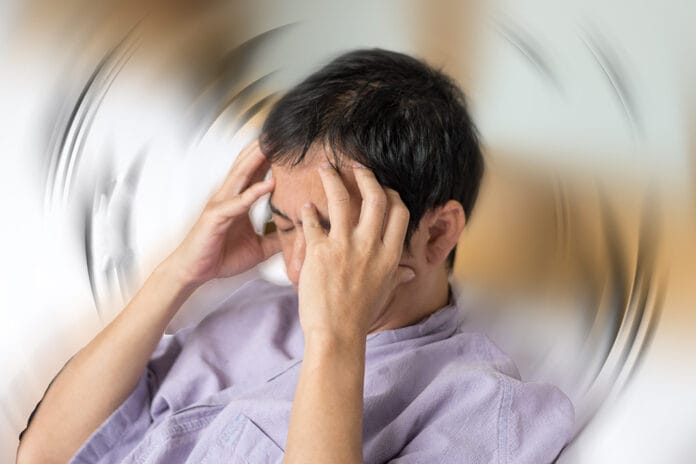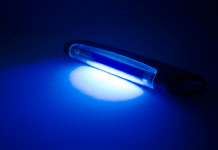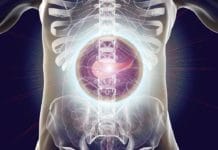Vertigo is an umbrella term for a person who has a sensation of motion when they are not moving, and inner ear problems often cause it. Vertigo can also be caused by migraines and some medications, including those to treat high blood pressure, anxiety, or infections.
Dental providers who stay alert about patients’ health histories can help our clients with vertigo. Some steps dental practice personnel can consider for patients with vertigo are listed below.
A reduction in balance from inner ear function may be caused by normal aging, infection, or diminished blood flow to specialized nerve cells in the inner ear. Labyrinthitis is an infection or inflammation of the inner ear that causes severe vertigo lasting one to two days. Labyrinthitis can induce hearing loss. Neuronitis causes episodes of vertigo in a similar manner, but it does not affect hearing.
Both conditions could be triggered by an upper respiratory infection, virus or flu, or can have no obvious cause. Some medications, such as antibiotics and chemotherapy drugs, damage the inner ear, causing temporary or permanent hearing loss, impaired balance, and trouble seeing.
Benign Paroxysmal Positional Vertigo
Half of the people over the age of 65 will suffer an episode of benign paroxysmal positional vertigo (BPPV). According to the Cleveland and Mayo Clinic, women are most prone.1 The experience may include lightheadedness, disrupted balance, nausea, and perhaps vomiting. It occurs when tiny calcium carbonate crystals that are normally in an inner-ear organ called the utricle break loose and travel into the inner ear’s canals.
Even a bump on the head can dislodge those crystals causing BPPV. Yet again, another reason to always wear a helmet. BPPV is positionally triggered. When you move your head a certain way, such as dropping it forward to pick something up off the floor or attempting a downward-facing dog, you can cause these crystals to move and bring on an attack. It may also be triggered when you’re lying down and happen to roll towards your bad ear to get out of bed in the morning, and, bam, you get hit.
The dizzy spells typically last for less than a minute but can return anytime you pitch your head, triggering another brief, brisk spin. It can be annoying and debilitating (even dangerously) to make people feel off-balance and put them at risk for falls. BPPV can go away on its own though it can last for months and even years.
A treatment called the Epley maneuver is typically performed by a vestibular rehabilitation therapist, occupational therapist, audiologist, or doctor. It involves moving the head in a certain series of precise positions that allow the crystals to migrate out of the semicircular canals back to the original vestibular organ they came from in the utricle.
If this is a treatment choice, make sure to be treated by a skilled practitioner. Some providers may use the wrong technique and treat the wrong ear or even the wrong canal. The Epley maneuver is designed for the posterior canal. There is also a possibility that the crystals are stuck; it’s not common, but it may happen.
Ménière’s Disease
BPPV and Ménière’s disease (endolymphatic hydrops) have similar symptoms. However, BPPV is usually triggered by specific head movements, while the attacks in Ménière’s can occur without warning and is characterized by vertigo, spinning sensation, headaches, loss of balance, hearing problems, and a ringing sound. Ménière’s comes from abnormal fluctuations in the fluid called endolymph which fills the hearing and balance structures of the inner ear. Usually, this involves only one ear.
Prosper Ménière, a French physician, hypothesized in 1861 that the symptoms of vertigo were not from the brain but instead the inner ear. Although Ménière’s is a relatively rare disorder, it can be debilitating for those who have it.
The potential triggers may include a head injury, ear infections, allergies, stress, smoking, alcohol, and certain medications. The exact cause is not known. Some people with Ménière’s find that certain events and situations such as smells, foods, and even lighting can be a trigger and set off an attack. Oncoming attacks are often preceded by an “aura” or a specific set of warning symptoms. They can be balance disturbance, dizziness, lightheadedness, headache, increased ear pressure, hearing loss or tinnitus, increased sound sensitivity, and a vague feeling of uneasiness.
As health care providers, it is important that we pay attention to our patients who battle with Ménière’s and look for the early onset of the attacks. These attacks can last 20 minutes to 24 hours.
Patients with Ménière’s are often encouraged to adopt lifestyle changes such as quitting smoking, as well as limiting or excluding salt, MSG, caffeine, and alcohol from diets. Ménière’s is treated with medications that are used for motion sickness, antiemetics, and/or diuretics. An injected drug, gentamicin, is deemed safe by many for a treatment protocol.2
Dental Practice Considerations
A study by Tzu-Pu Chang et al. found a correlation between dental procedures and BPPV.3 The study concluded that dentists should recognize BPPV as a possible complication of dental treatment. The odds ratio was different depending upon the procedures. Periodontics was highest, followed by oral surgery, endodontics, prosthodontics, and finally dental scaling. Looking at all the available evidence, it’s hard to conclude that dental work is a direct cause of BPPV. In that Taiwan study, it’s still not clear if the patients already had BPPV, and dental work merely induced the first onset of symptoms.
During dental treatment, patients need to turn their heads to the left or to the right for providers to access different parts of the mouth. Could that bring on BPPV symptoms? Is it perhaps the length of time a patient is lying back in the chair? Could it be related to the micro-vibrations that they experience with the dental handpiece or ultrasonic scaler, and those micro-vibrations cause calcifications already deposited in the vestibular canals to circulate?
While it is difficult to conclude that the dental work directly causes BPPV, the correlation between the two cannot be ignored, and we need to be alert to the possibilities. An investigation into the relationship between dental and maxillofacial surgery and BPPV was reported following surgical trauma from different surgical interventions.4 The indirect trauma by using either rotating tools or hammer and scalpel on the maxilla as well as on bone structures on the posterior labyrinth seems to be the origination of BPPV. Even mild trauma during surgery caused by vibrations can cause damage. They concluded that dental surgery is a risk factor for BPPV.
The first action providers should be paying attention to is the health history and be hopeful that patients notify us of their history of vertigo. An addition to our standard medical histories may need to include vertigo.
Should we consider doing shorter visits? Do we modify how we treat such as changing chair position? We all know how difficult it is when a patient doesn’t want to lean all the way back, but we do have to be cognizant of their health challenges and their comfort. Provide a neck pillow, check the noise level, and reduce lighting by offering dark safety glasses.
If a patient has a history of vertigo, we should pay attention to prevent them from excessively bending the back of their neck or shoulders to perform treatment. The Vestibular Disorders Association (VeDA) published a dentist’s guide for the dizzy patient, and the following list is from the association’s website:5
- Schedule dizziness patients at their best time of day.
- Symptoms can come on suddenly, resulting in possible last-minute scheduling changes.
- Offer an arm for the patient to hold while walking, as hallways and busy pattern flooring exacerbate disequilibrium.
- Accommodate a friend or family member who may accompany the patient.
- Communicate while sitting knee-to-knee and in front of the patient as much as possible. Politeness eases tension, and the closeness will aid those with hearing loss and/or tinnitus.
- Speak slowly while keeping your head and arms still. Be patient as these patients tend to behave anxiously due to their physical symptoms.
- Do not move the dental chair without discussing it with the patient first. Some patients will want to sit forward while the chair reclines.
- Ask the patient for positioning feedback and always keep their head above their feet.
- Empower the patient by allowing them to take breaks, if needed, by raising their hand.
- During the procedure, inform the patient when to anticipate vibration and check on their wellbeing.
- Conversation should pertain to the patient. Do not engage in side-talk, which can be distracting and cause anxiety, unless the patient initiates it to relieve tension.
- Move your operator chair and change your position to accommodate patients who cannot lie supine and/or turn their heads.
Our baby boomers are aging, and the propensity for BPPV will be growing. The population of our practices that may have any cause of vertigo is an area that we should all be well versed in. Compassion for this subgroup of patients from the front staff to the back staff would be welcomed. As Aesop noted, “No act of kindness, no matter how small, is ever wasted.”
Now Check Out the Peer-Reviewed, Self-Study CE Courses from Today’s RDH!
Listen to the Today’s RDH Dental Hygiene Podcast Below:
References
- Benign Paroxysmal Positional Vertigo (BPPV). (2020, August 18). Mayo Clinic. https://www.mayoclinic.org/diseases-conditions/vertigo/symptoms-causes/syc-20370055
- Scarpa, A., Ralli, M., Cassandro, C., et al. Low-dose Intratympanic Gentamicin Administration for Unilateral Meniere’s Disease Using a Method Based on Clinical Symptomatology: Preliminary Results. Am J Otolaryngol. 2019; 40(6): 102289. doi:10.1016/j.amjoto.2019.102289. https://pubmed.ncbi.nlm.nih.gov/31537428/
- Chang, T.P., Lin, Y.W., Sung, P.Y., et al. Benign Paroxysmal Positional Vertigo after Dental Procedures: A Population-Based Case-control Study. PLoS One. 04 April 2016; 11(4): e0153092. doi:10.1371/journal.pone.0153092. https://europepmc.org/article/PMC/4820237
- Chiarella, G., Leopardi, G., De Fazio, L., et al. Benign Paroxysmal Positional Vertigo after Dental Surgery. Eur Arch Otorhinolaryngol. 2008; 265(1): 119-122. doi:10.1007/s00405-007-0397-7. https://pubmed.ncbi.nlm.nih.gov/17647006/
- Hughes, T. (2022). Dentist’s Guide to The Dizzy Patient. Vestibular Disorder Association. https://vestibular.org/article/coping-support/living-with-a-vestibular-disorder/dentists-guide-to-the-dizzy-patient/










